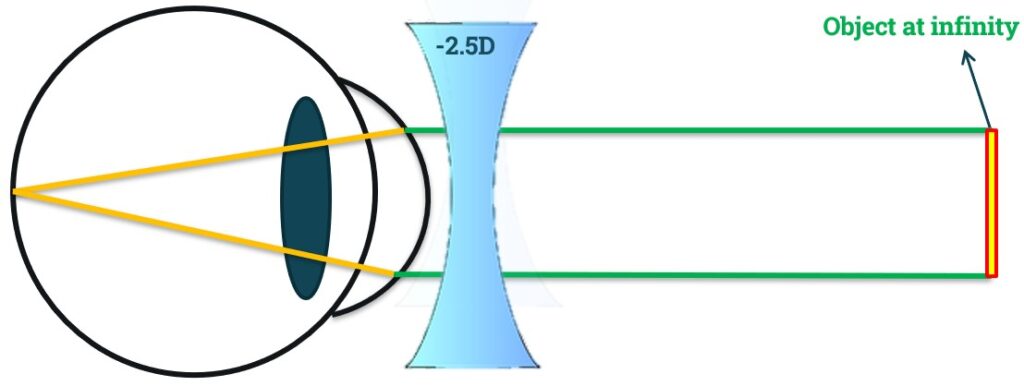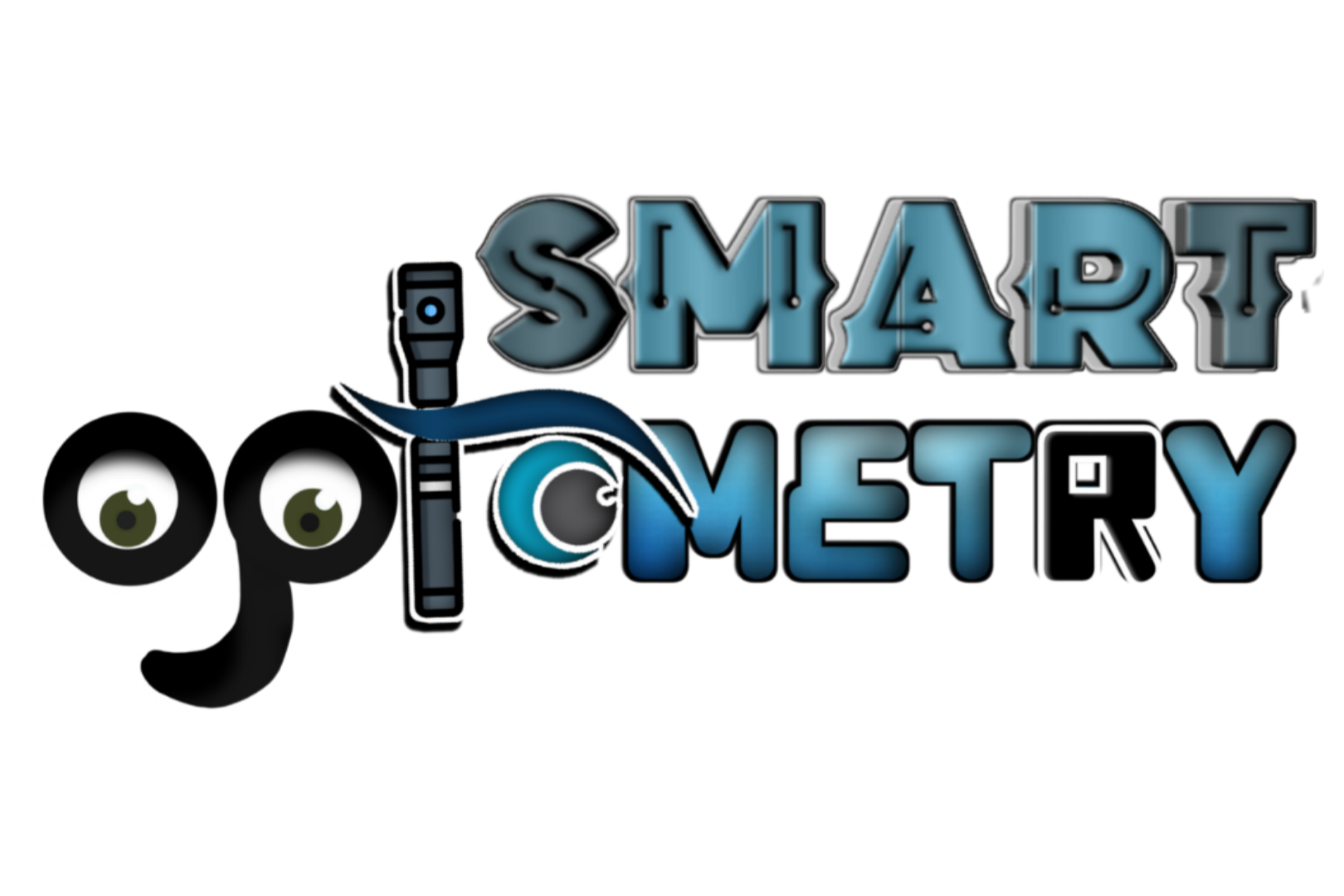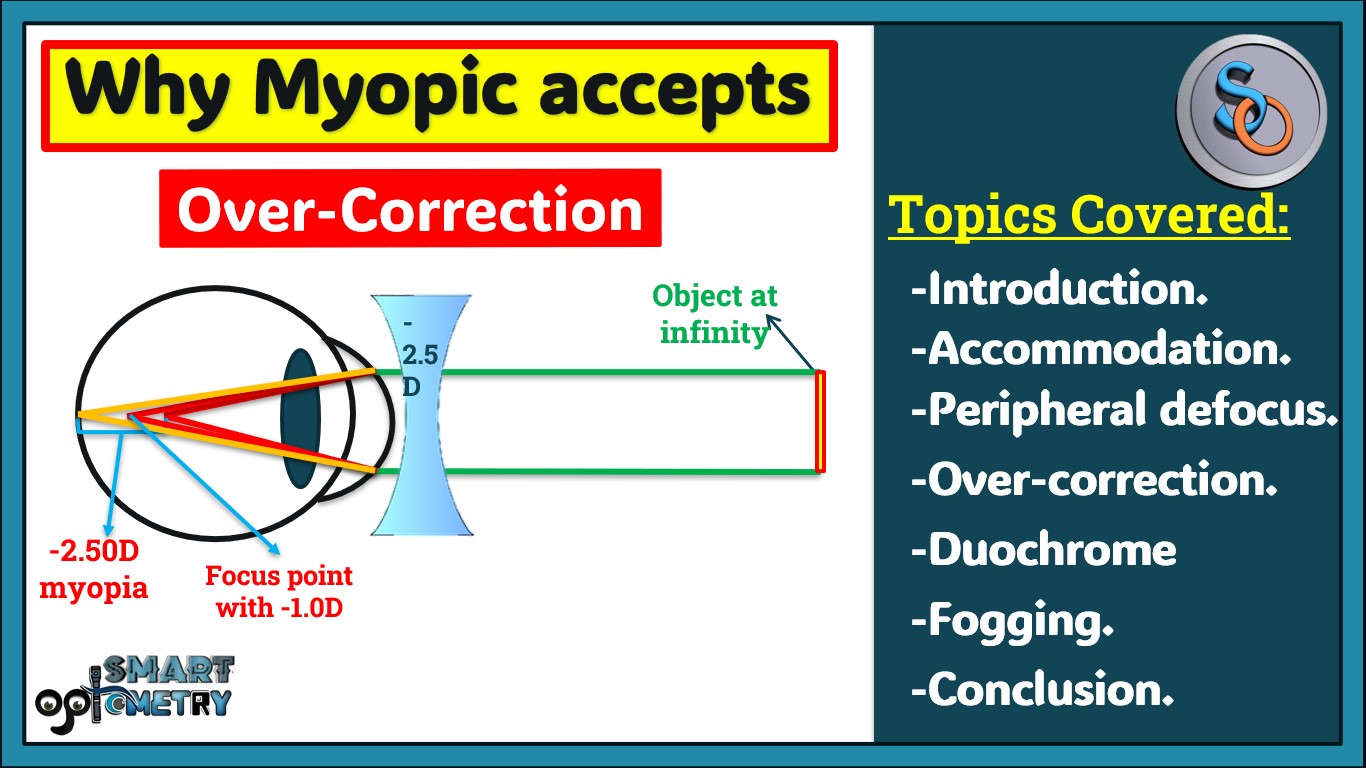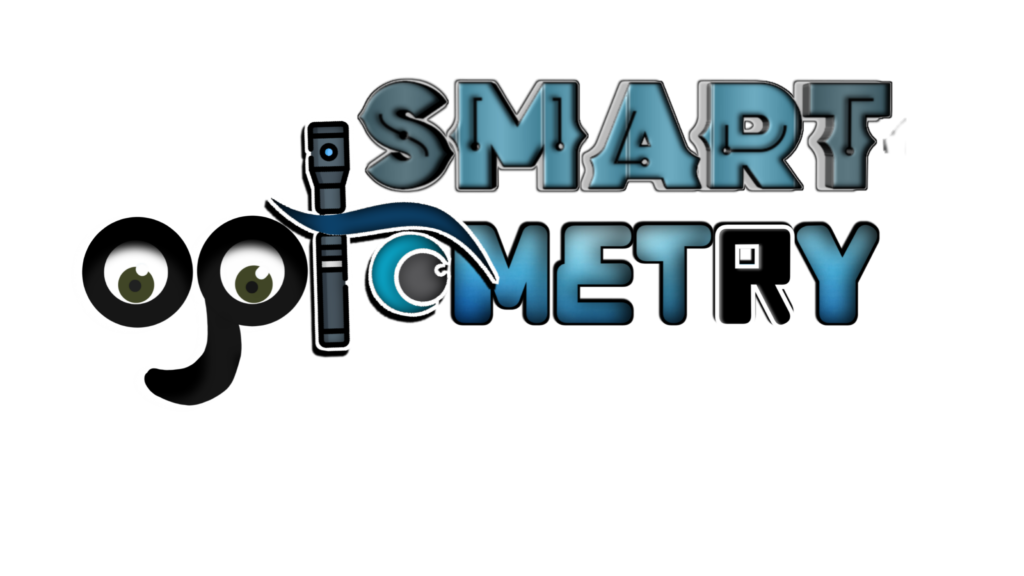Clinical Insight:
- In practice it’s found that patient accept minus power more easily than plus power.
- Not only minus power is accepted easily but also over correction of myopia is also accepted by the patient easily.
- Thus, most practitioners are more comfortable with minus power than plus power.
Why does patient accept even overcorrection of myopia comfortably?
A patient with myopia of -2.50D may see clearly even with -3.00D or -3.50D also.
- Let’s see how…..
- Without correction, when patient is focusing at infinity rays coming from objects focus in front of the retina.
- This distance from retina to point where rays focus is equivalent to -2.50D as patient is having myopia of -2.50D.
- Now if we place a -1.0D concave lens in the spectacle plane it will diverge the rays towards the retina, somewhere here……
- Now, patient will see clearer as compared to previous but still won’t be able to read 6/6 line as patient is still having myopia of -1.50D.
- If we place a -2.50D concave lens at the spectacle plane, the rays will focus on the retina and patient will see crystal clear and will be able to read 6/6 line.
- Now, if we place a -3.0D concave lens still patient will see crystal clear and will be able to read 6/6 line.

- If we place a -3.00D concave lens at the spectacle plane, the rays will focus behind the retina and as rays is focusing behind the retina patient should see blur, but it doesn’t happen.
- When rays focus behind the retina, accommodation gets stimulated and bring back the rays on the retina and as rays focusing on the retina patient will see clearly and will read 6/6 line comfortably. This is the reason why does myopic patient sees clearly or able to read 6/6 line even with over correction of myopia.
- So, Myopic patient sees clear or able to read 6/6 line even with overcorrection by the help of accommodation.
Consequences of Over-Correction:
- When we left a myopic patient with overcorrection, patient will accommodate more than the required in any point.
- Suppose for the above patient we left with -0.50D overcorrection, now while he will read book at 40cm, generally he needs 100/40 or 2.5D of accommodation but as we have given -0.50D overcorrection, he will accommodate 2.5 + 0.50 or 3.0D at 40cm.
- Even at infinity where accommodation should be zero but due to overcorrection of myopia of -0.50D, accommodation will be 0.50 at infinity.
- Due to overuse Accommodation, he will develop:
- Asthenopic symptoms or headache.
- Lead accommodation in long run.
- Myopia Progression.
How does over correction of myopia increase myopia progression?
There two main mechanisms:
- Continuous Ciliary muscle contraction.
- Peripheral De-focus.
1. Continuous Ciliary Muscle Contraction:
- To correct the over-correction of myopia, accommodation is activated at any point from neat point to infinity.
- Continuous activation of accommodation needs continuous contract of ciliary muscles.
- Continuous contraction of ciliary muscle is a stimulus for myopia progression.
- Stimulus are sent to the brain to increase the Axial length (Myopia Progression) of eye so that rays can focus on the retina without overuse of accommodation.
2. Peripheral De-focus:
- Accommodation corrects the blur duo to over-correction of myopia for central vision or central rays.
- Peripheral rays focus behind the retina due to aberration of concave lens or retinal curvature.
- Those peripheral rays act as a stimulus for myopia progression.
- Stimulus are sent to the brain to increase the Axial length (Myopia Progression) of eye so that peripheral rays can focus on the retina.
How to prevent Over-Correction of Myopia during Refraction:
- Two easy methods thorough which we can prevent Over-Correction of Myopia are:
- Duochrome Test.
- Fogging:
Duochrome Test:
- Duochrome Chart Consists of Black Letters on Green & Red Background.
- When rays focus behind the retina or over correction of myopia Black Letters on Green Background will be clearer than Letters on Red Background.
- So, we can reduce the minus power till letters on both backgrounds equally clear.
- Watch Details about Duochrome Test here: Duochrome Test- Everything You need to know.
Fogging Method:
- Put the objective power that is found in retinoscopy or autorefractometer on the trial frame.
- Now Fogg both eyes with plus lenses in +0.25D steps till patient visual acuity reduced by 2-3 lines.
- Perform alternate occlusion and ask the patient in which eye Snellen letters are clearer.
- Add +0.25D till both eyes image become equally blur (Binocular Balancing).
- After Balancing, remove plus power gradually in +0.25D steps till patient read 6/6 just for the first time (No reduction in Fogg power after patient read 6/6 line for the first time).
- Now, add the fogging power to the objective power to get final power.
- Check Our Courses: Ophthalmic Instrumentation, Clinical Refraction, Contact Lens, Binocular Vision, Dispensing Optics, MCQs in Optometry
- Download our App “Optometry Notes & MCQs” from Google Play Store.




